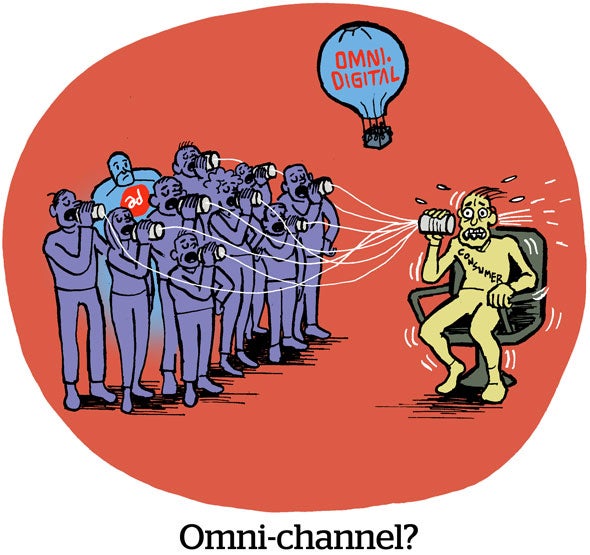Retail media standards: Still a thing we’re working on!
The tagline needs work. But the demand for IAB-based retail media standards is still growing.
A year ago, ad tech vendors led by the startup Kevel created an outside group to accelerate retail standardization, hoping it would happen in 2024. The group later merged its work with the IAB Tech Lab.
Kevel and the other retail ad startups stand behind the IAB’s standards, Kevel CEO James Avery told AdExchanger at the time. “We just have a little more urgency to get this figured out.”
Well, call it a Christmas miracle, because this month the IAB and IAB Europe released the final version of its first retail media standards. As a first step, these standards establish certain definitions and metrics that can be consistent across different retailers, such as creating clear zones within a brick-and-mortar store (exterior, entrance, checkout, aisles and other) and potential ad reporting metrics like “gross impressions,” as well as ads with “the opportunity to see” or “likelihood-to-see.”
So retail media standards are happening?
Yes. Retail media standards do now exist, and advertisers and retail media networks can begin adopting those mutual metrics and definitions.
But the problem is more difficult than standardization across the open web.
For one thing, there is the simple fact that stores themselves are all different.
The IAB defines retail media as “digital place-based” campaigns tied to a real-world shopping location. In other words, these standards aren’t for sponsored product listings on an app or website – which are fairly easy to standardize and automate. This is about how to evaluate all the marketing in and around a store. Which is probably more than you think.
If there are gas pumps or electric car-charging stations outside, or any sort of screen or billboard nearby a store, those digital out-of-home spots are retail media DPB ads. The audio ads from radio or streaming music in the store are DPB placements. Coinstar machines, shopping carts with screens, physical coupons, offers on a digital price tag and cardboard aisle displays could all fall under retail media and DPB ads.
There are, in other words, monstrous differences between the types of inventory an advertiser might get from different retailers. Which is why new metrics like “the opportunity to see” or “likelihood-to-see” were advocated for by retailers themselves, as a way to differentiate from a metric like “gross impressions.”
If a supermarket serves an ad on its new line of in-store smart-carts and it’s confident the shopper saw that ad, does that count the same as a small display ad on the Coinstar machine in the store entranceway?
Retail reticence
Achieving consensus on the definitions for even baseline retail media metrics required a tough 18-month slog.
Unfortunately, this was the easy part.
Now, standards must be adopted and enforced by platforms and vendors.
Standardization is “an easy thing to rally behind,” Evan Hovorka, VP of product and innovation for the Albertsons Media Collective, the grocer’s retail media business, recently told AdExchanger.
Everyone can say they’re for lowering taxes and spending more on public schools, too. But there are disincentives to adopting retail media standards as well, which some retailers and ad tech vendors don’t mention.
Criteo, for instance, stands to benefit by any rising of the tide in retail media. If RMN standards mean more brands feel comfortable shifting shopper marketing budgets to ad tech, that’s a good thing for programmatic overall.
But Criteo also benefits by the current state of non-standardization. As the incumbent among independent retail ad networks (i.e., not Google or Amazon), Criteo doesn’t exactly need standards. All of the taxonomies, creative formats and definitions for tracking and targeting exist within Criteo. Smaller retail ad tech competitors like Kevel, CitrusAd and TripleLift benefit disproportionately by standardization, because advertisers are less likely to default to the incumbent, where it’s simplified and a broad RMN network already exists.
Hovorka said one promising sign of standards catching on is the recent adoption by LiveRamp, which he said is important because, like Criteo, LiveRamp is one of those incumbent vendors that might be said to benefit by the lack of standards. But LiveRamp has strongly adopted the IAB retail media standards, he added, which means it will put its own “seal of approval” on metrics and conversions from the new RMN standards.
Eschewing retail media standards might be a way for some platforms to “preserve their RMN businesses as a singular thing,” Hovorka said. And that strategy may have worked five years ago, he added.
But for CPG advertisers, the problem doesn’t go away, he said. “Now we have to think of ourselves as an industry and work together to solve these problems.”














